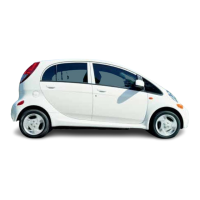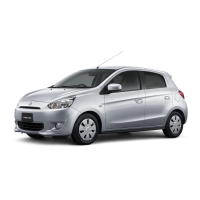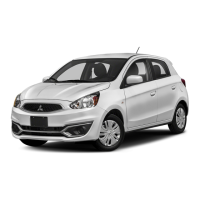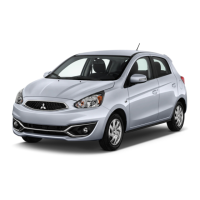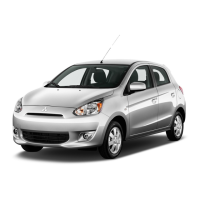IO-12
Chapter IO Suspension and steering systems
9
Balljoints - check and replacement
Warning:
Whenever any of the suspension or steering fasteners are
kwsenedorremoved, theymustbe inspectedand, ifnecessary, replaced
with new ones of the same part number or of original equipment quality
anddesign. Torque specificationsmustbe followed forproperreassembly
and component retention.
Check
1 Raise the vehicle and support it securely on jackstands.
2 Visually inspect the rubber seal for cuts, tears or leaking grease. If
any of these conditions are noticed, the balljoint should be replaced.
3 Place a large prybar under the balljoint and attempt to push the ball-
joint up. Next, position the prybar between the steering knuckle and the
arm and apply downward pressure. If any movement is seen or felt during
either of these checks, a worn out balljoint is indicated.
4 Have an assistant grasp the tire at the top and bottom and shake the
top of the tire in an in-and-out motion. Touch the balljoint stud castellated
nut. If any looseness is felt, suspect a worn out balljoint stud or a widened
hole in the steering knuckle boss. If the latter problem exists, the steering
knuckle should be replaced as well as the balljoint.
Replacement
Upper control arm balljoint
5 The balljoints on upper control arms are pressed into place. Conse-
quently, replacement requires removing the upper arm and taking it to a
dealer or other properly equipped shop to have the balljoint pressed out
and a new one installed.
Lower control arm balljoint
2WD models
6 Remove the front spring and steering knuckle (see Section 6).
7 Remove the bolts and nuts, then detach the balljoint from the control
arm (see illustration 8.2).
8 Place the new balljoints in position and install the bolts and nuts.
Tighten the bolts to the torque listed in this Chapter’s Specifications.
9 Install the spring and steering knuckle.
4WD models
10 With the vehicle raised and supported, position a floor jack under the
lower arm - it must stay there throughout the entire operation. Remove
the wheel. Remove the balljoint cotter pin and loosen the castellated nut a
couple of turns, but don’t remove it (it will prevent the balljoint and steering
knuckle from separating violently).
11 Using a balljoint separating tool, separate the balljointfrom the steer-
ing knuckle. There are several types of balljoint tools available, but the
kind that pushes the balljoint stud out of the knuckle boss works the best
(see illustration 10.9). The wedge, or “pickle fork” type works fairly well,
but it tends to damage the balljoint seal. Some two-jaw pullers will do the
job, also.
12 Remove the castellated nut and disconnect the balljoint from the
steering knuckle. If necessary, remove the steering knuckle (see Section
10) and the driveaxle (see Chapter 8).
13 The balljoint is retained to the suspension arm by bolts and nuts. Re-
move the bolts and nuts, then detach the balljoint from the an. Take note
of how the balljoint is positioned on the arm - the new one must be in-
stalled the same way (see illustration 8.3).
14 Position the new balljoint on the arm and install the nut or bolts, tight-
ening them to the torque listed in this Chapter’s Specifications.
15 Insert the balljoint stud into the steering knuckle boss, install the cas-
tellated nut and tighten it to the specified torque. Install a new cotter pin. If
necessary, tighten the nut an additional amount to line up the slots in the
nut with the hole in the balljoint stud (never loosen the nut to align the
hole).
16 Install the wheel and lug nuts. Lower the vehicle and tighten the lug
nuts to the torque specified in Chapter 1.
8
10,6a 2WD Steering knuckle details
1
Front
brake
assembly
8 Dust cover I4
Stabilizer bar nut
2
Grease cap 9 Cotter pin 15 Cotterpin
3 Cotter pin 10 Nut
16
Nut
4
Nut
II Tier&end
I 7
Cotter pin
5 Washer 12 Shockabsorbernuts 18
Nut
6 Outer bearing
13
Shock absorber 19
Steering knuckle
7 Front hub

